Andrew Russell, Dr. Todd Otanicar, Dr. Nipun Goel, Mei-lin Fong
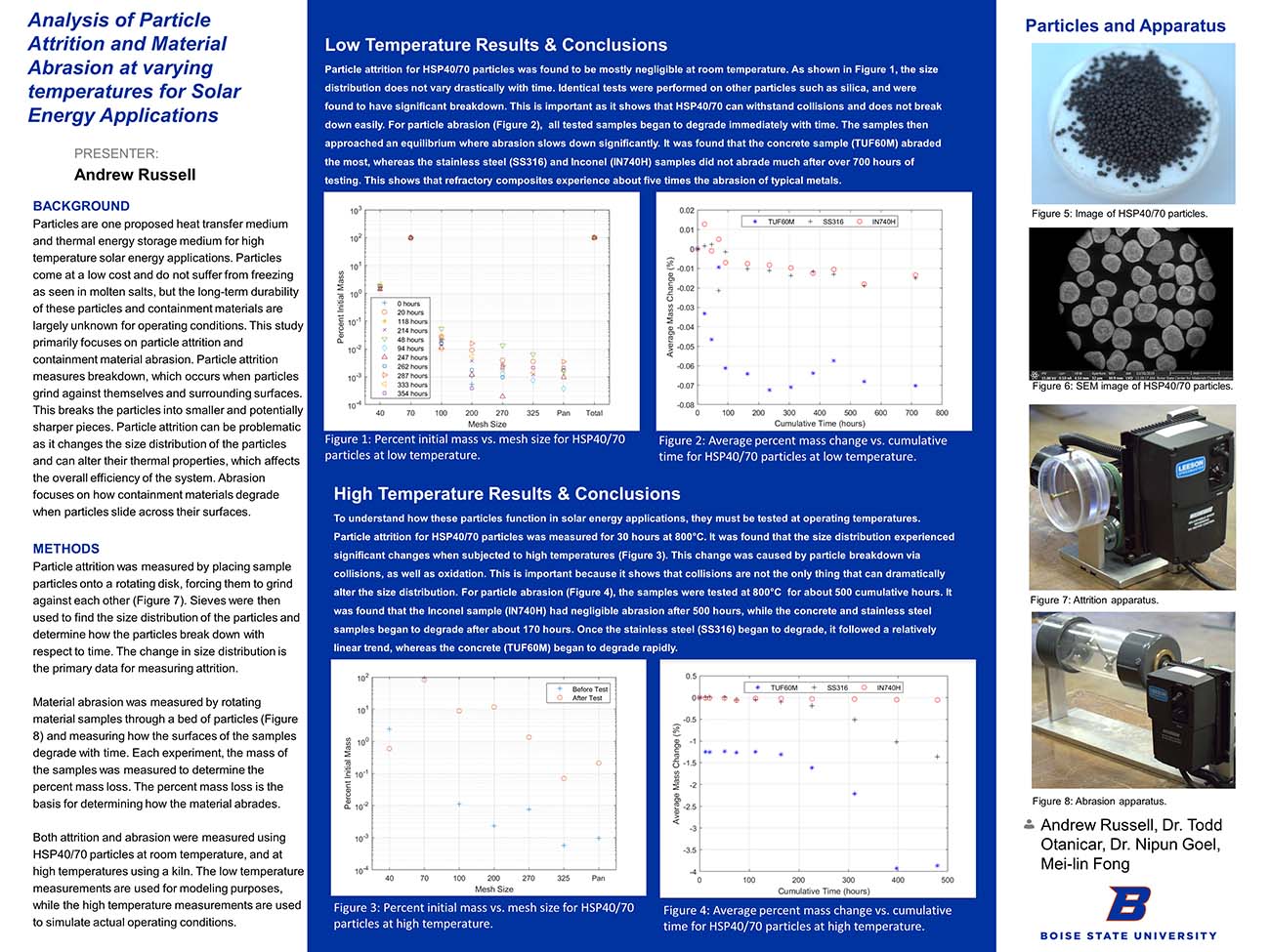
Background
Particles are one proposed heat transfer medium and thermal energy storage medium for high temperature solar energy applications. Particles come at a low cost and do not suffer from freezing as seen in molten salts, but the long-term durability of these particles and containment materials are largely unknown for operating conditions. This study primarily focuses on particle attrition and containment material abrasion. Particle attrition measures breakdown, which occurs when particles grind against themselves and surrounding surfaces. This breaks the particles into smaller and potentially sharper pieces. Particle attrition can be problematic as it changes the size distribution of the particles and can alter their thermal properties, which affects the overall efficiency of the system. Abrasion focuses on how containment materials degrade when particles slide across their surfaces.
Methods
Particle attrition was measured by placing sample particles onto a rotating disk, forcing them to grind against each other (Figure 7). Sieves were then used to find the size distribution of the particles and determine how the particles break down with respect to time. The change in size distribution is the primary data for measuring attrition.
Material abrasion was measured by rotating material samples through a bed of particles (Figure 8) and measuring how the surfaces of the samples degrade with time. Each experiment, the mass of the samples was measured to determine the percent mass loss. The percent mass loss is the basis for determining how the material abrades.
Both attrition and abrasion were measured using HSP40/70 particles at room temperature, and at high temperatures using a kiln. The low temperature measurements are used for modeling purposes, while the high temperature measurements are used to simulate actual operating conditions.
Low Temperature Results & Conclusions
Particle attrition for HSP40/70 particles was found to be mostly negligible at room temperature. As shown in Figure 1, the size distribution does not vary drastically with time. Identical tests were performed on other particles such as silica, and were found to have significant breakdown. This is important as it shows that HSP40/70 can withstand collisions and does not break down easily. For particle abrasion (Figure 2), all tested samples began to degrade immediately with time. The samples then approached an equilibrium where abrasion slows down significantly. It was found that the concrete sample (TUF60M) abraded the most, whereas the stainless steel (SS316) and Inconel (IN740H) samples did not abrade much after over 700 hours of testing. This shows that refractory composites experience about five times the abrasion of typical metals.
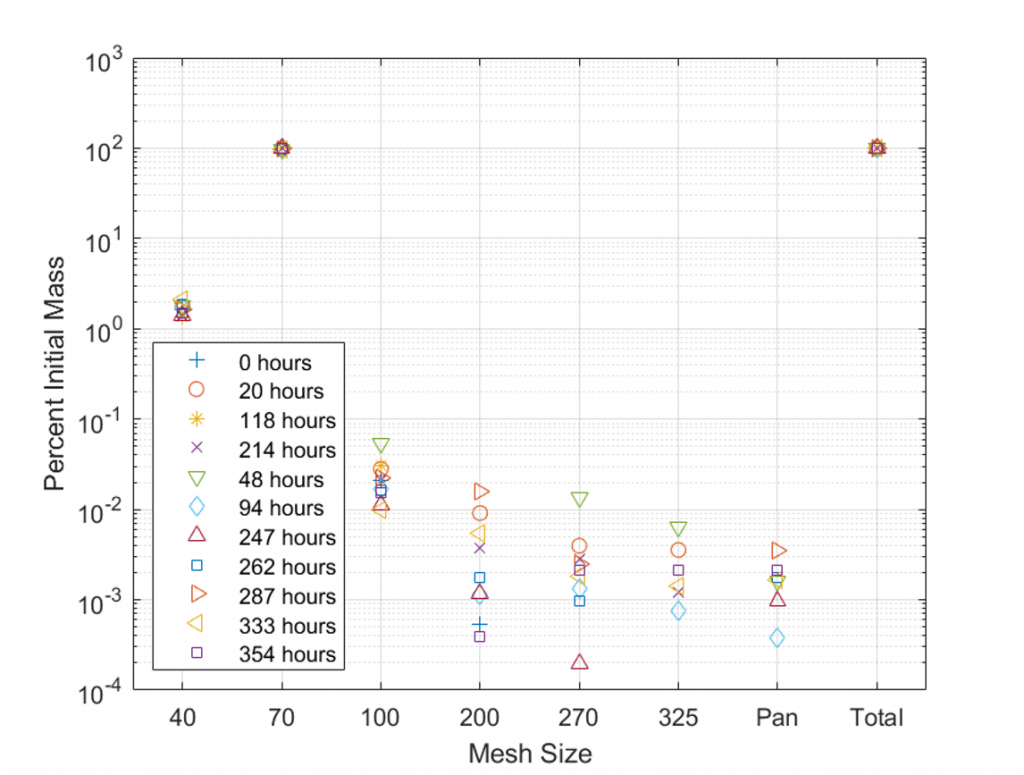
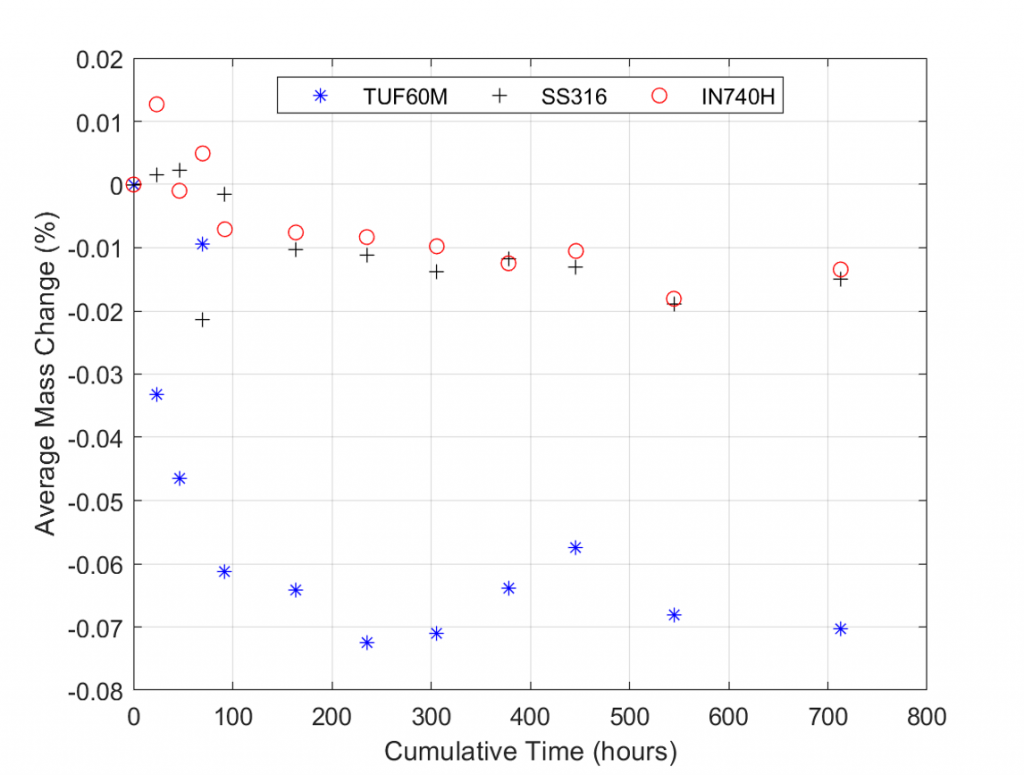
High Temperature Results & Conclusions
To understand how these particles function in solar energy applications, they must be tested at operating temperatures. Particle attrition for HSP40/70 particles was measured for 30 hours at 800°C. It was found that the size distribution experienced significant changes when subjected to high temperatures (Figure 3). This change was caused by particle breakdown via collisions, as well as oxidation. This is important because it shows that collisions are not the only thing that can dramatically alter the size distribution. For particle abrasion (Figure 4), the samples were tested at 800°C for about 500 cumulative hours. It was found that the Inconel sample (IN740H) had negligible abrasion after 500 hours, while the concrete and stainless steel samples began to degrade after about 170 hours. Once the stainless steel (SS316) began to degrade, it followed a relatively linear trend, whereas the concrete (TUF60M) began to degrade rapidly.
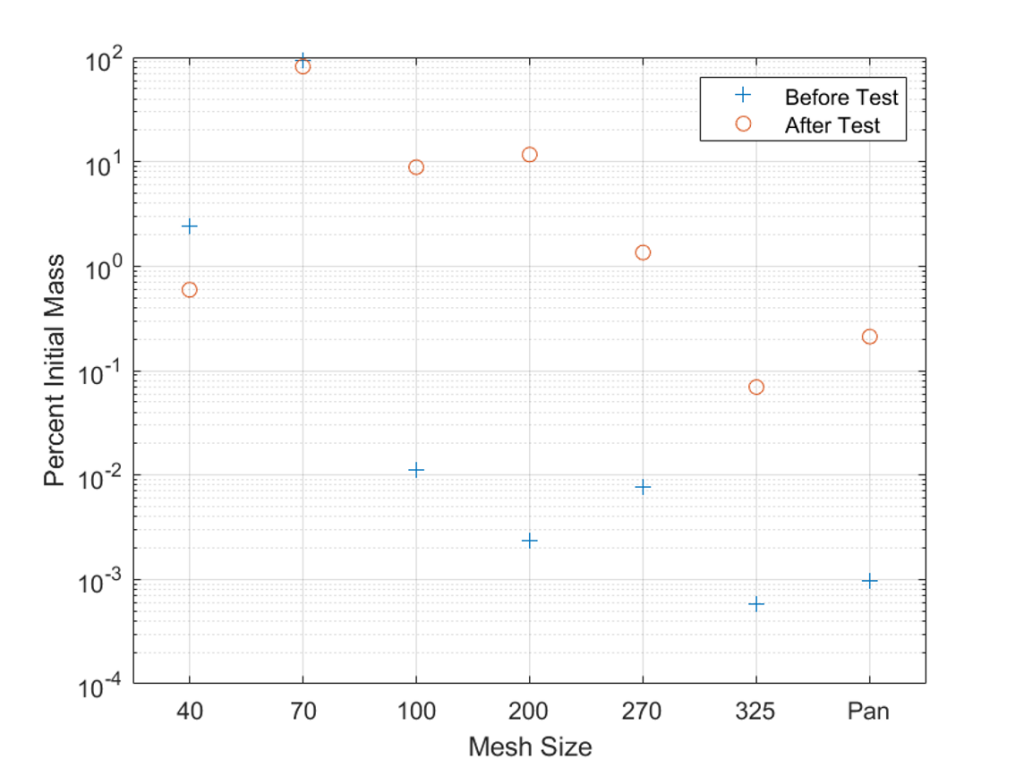
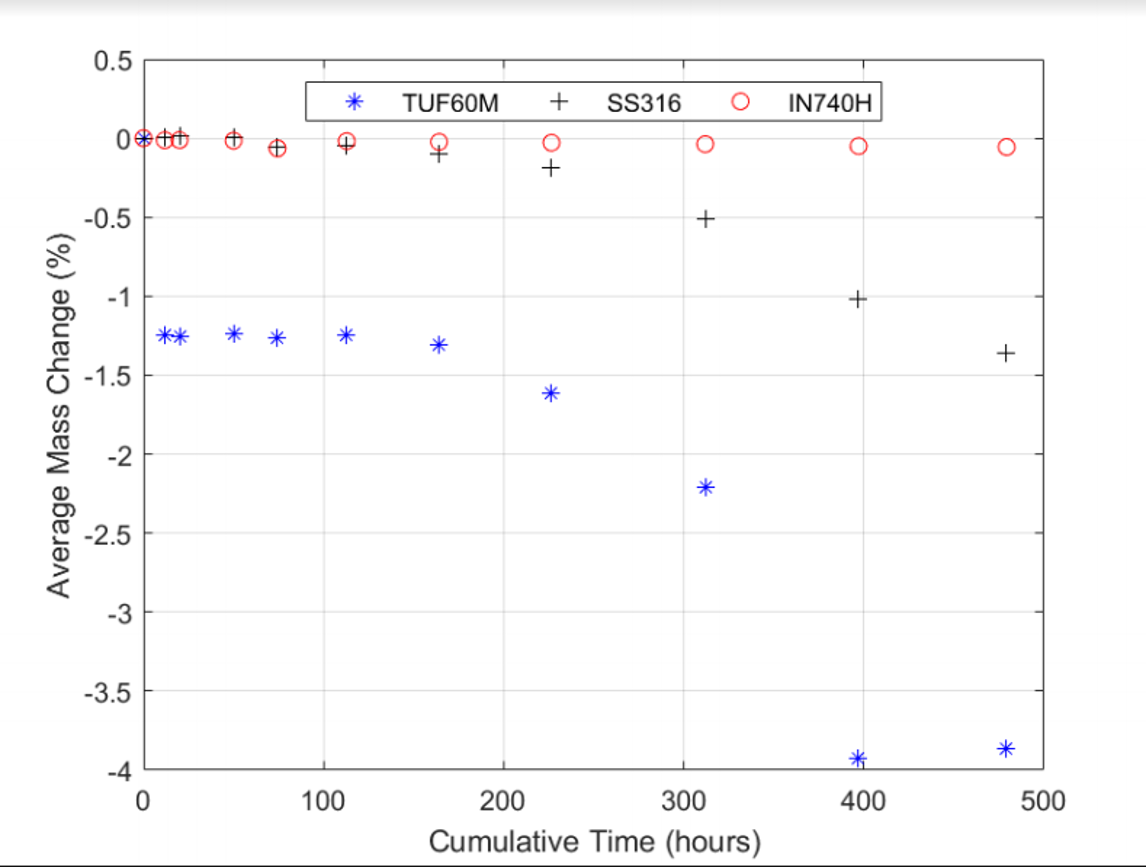
Particles and Apparatus
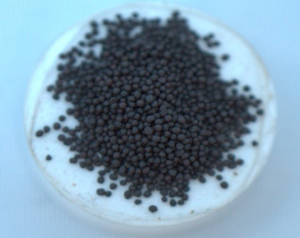
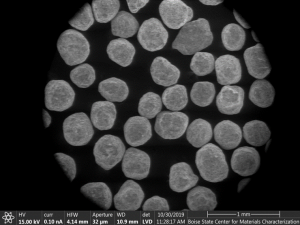
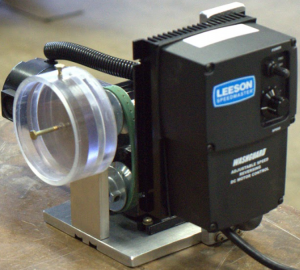
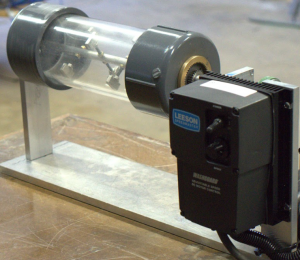
Additional Information
For questions or comments about this research, contact Andrew Russell at andrewrussell@u.boisestate.edu.